The text came late on a Saturday afternoon in July: “Moving the Kahuna pole around and maybe putting it up if you’re keen.”
Eli and I loaded up water, sweatshirts, and some snacks and drove to White Crest Beach in Wellfleet, where the evening air was cool, blue, and misty. A full Buck Moon was breaking the horizon unseen behind an ocean haze.
At the bottom of the dune lay a massive log, the trunk of an old white pine that likely once stood on the coast of Maine or Nova Scotia. Its lithe body and broken branch stubs lay in silhouette against the sand, and all around its base were dark figures in rhythmic motion, throwing sand with shovels from a giant hole. From the top of the dune, they looked like ants building a colony. We ran down the trail, walked to the edge of the crater, picked up shovels, and fell in with them.
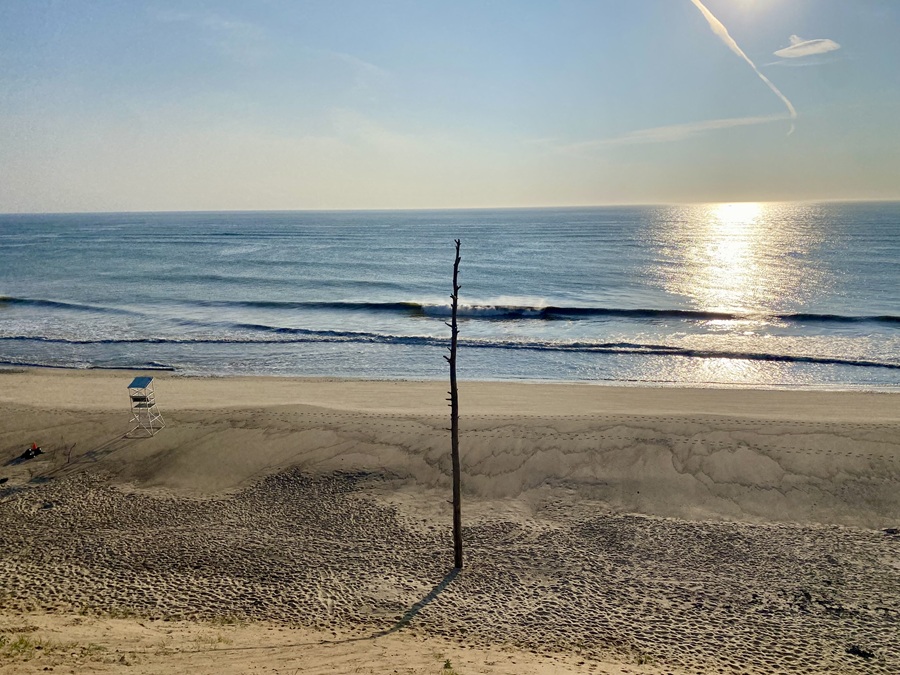
Five people were at the bottom of the hole digging into damp sand. Midway up its wall, 10 others were shoveling that same sand up to the top edge. At the rim of the crater, more people were shoveling and raking sand back from the edge. Everyone worked in concert, efforts bent to a common purpose.
Every few minutes, an instruction would come echoing up from the hole: “Dig here.” Or “We need more sand from there.” Or “Careful not to cave in the edges.”
We dug into the night, working by the light of headlamps. The tree would need to be stood up the following day; we were running out of light and energy, and it was too dangerous to cable it up in the dark.
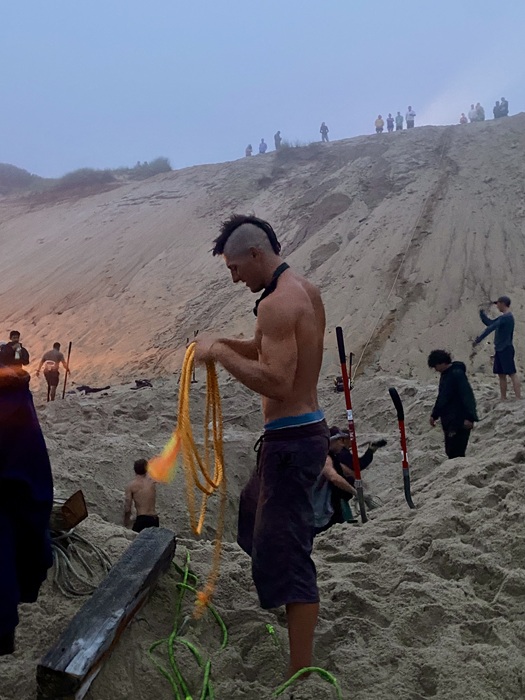
The next evening, under a purple sky, the digging continued. Someone’s mom brought pizza. A red thermos of some kind of homemade cocktail rested in the sand. Little kids ran on the beach in packs, living their own imagined adventures. The warm orange light of a fire reflected off the sand onto the faces of friends.
When the hole was finally deep enough, ropes were tied to the top of the tree and spread like spokes across the beach. One line was fed into a winch strapped to the rear of a large truck at the top of the dune. As the support ropes were taken up by hand, the cable was pulled taut by the winch, and slowly the tree rose, with teams surrounding it pulling together on the ropes to keep it steady.
Now it was upright, a silhouette against the sky. And the rhythm of the digging resumed: all that sand had to go back into the hole. Once the trunk was steadied, all the kids ran to it. They surrounded the old tree, each placing a hand on it, drawing their fingers over the wood’s smooth grain as they encircled it, walking to pack down the sand.
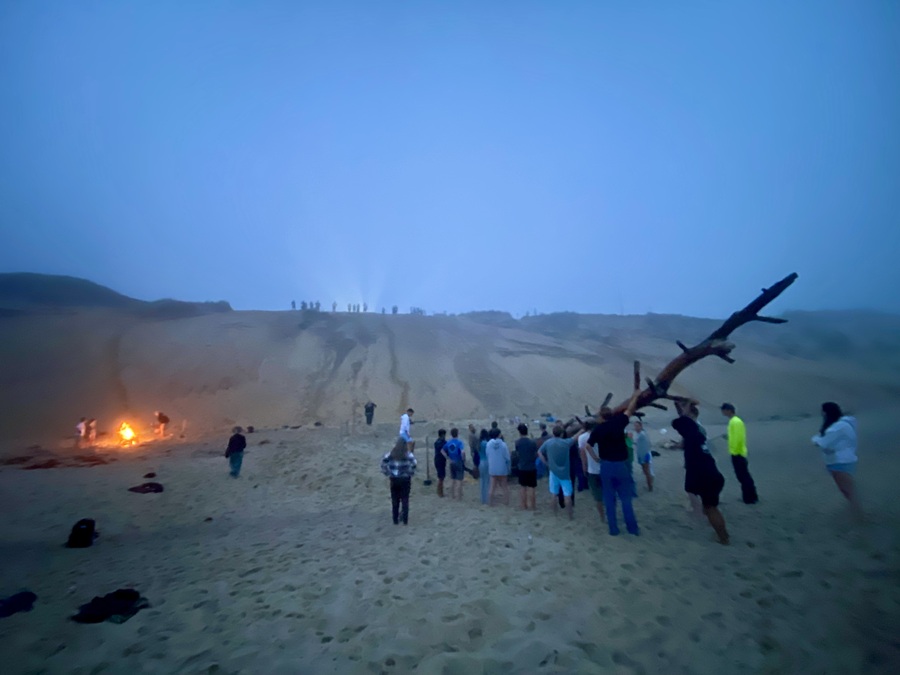
Ask a surfer or a beach person here and you’ll hear that Kahuna poles are a Wellfleet tradition. Raising one is a ritual said to bring waves to our beaches. The gathering and the presence of the poles each summer is an act of devotion to the sea and the energies that reside in it.
“They are an appeasement to the surf gods,” says Colin Nobili. A lifeguard and local shredder, Nobili has taken responsibility for the community’s holding onto this tradition and was one of the architects behind this year’s Kahuna pole raising.
The word “Kahuna,” like most other things surfing, has its roots in Hawaiian culture. A Kahuna is a master, whether a healer or doctor, a priest or sorcerer. It’s a person revered in the community.
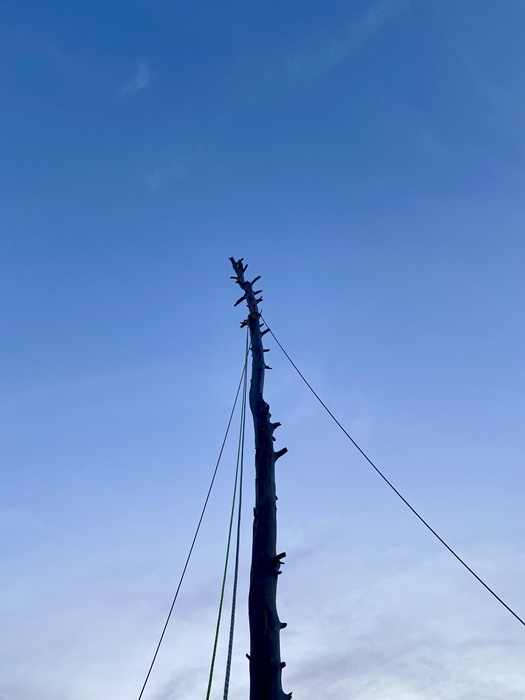
The practice has deep roots on our shores. Standing up trees on the beach was a practice developed in the old days out of necessity, says Eric Anderson, a lifeguard and another keeper of the Kahuna pole tradition. When the forests were clear-cut in the 1800s, there were no landmarks for dorymen and fishermen to navigate by, Anderson says, so they made their own.
Both surfers and fishermen inhabit worlds in which superstition makes as much sense as logic. Both develop their own mythologies and make their own religions of them. At some point, there was a cross-pollination of ideas between these watermen, and standing up a washashore tree on the beach became a part of their culture.
My childhood memories are full of Kahuna pole-raising beach jags. They were one of many markers of the passing of the seasons: chop and stack wood in fall, burn Christmas trees in winter, plant the vegetable garden in spring, and stand up a tree on the beach in summer.
These were parties, drawing together watermen of all kinds — surfers, sailors, lifeguards, beach people, and anyone who loved the ocean and the thrill of a good communal effort. There was food and fire and lots of beer. They were warm and connective gatherings, tribal and heathen in ways that felt elemental.
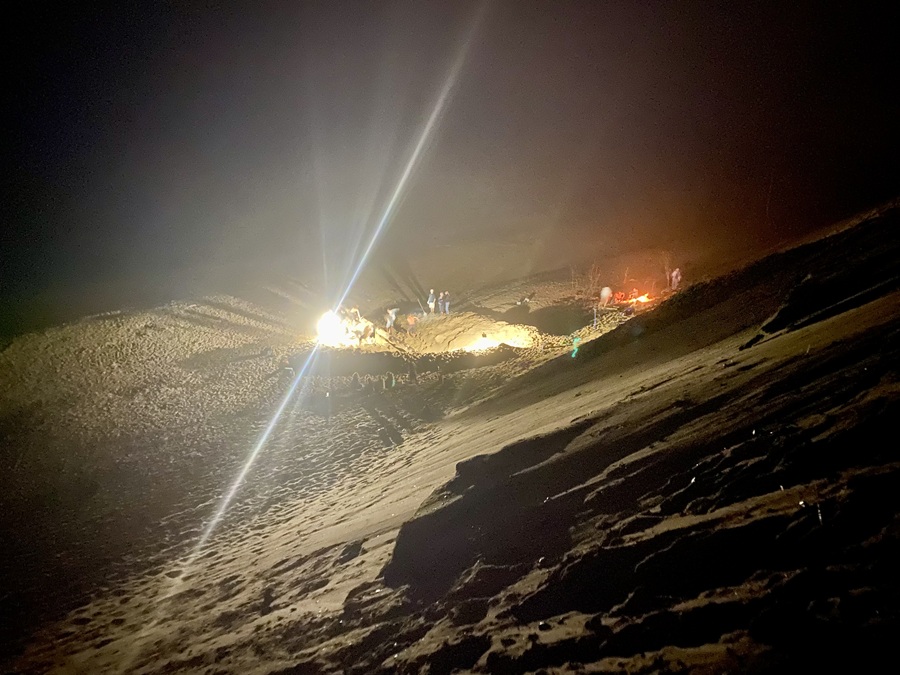
I remember the day that my older brother, Caleb, was deemed ready to climb up the pole to free the ropes at its top. It was a rite of passage. And besides, the parents present were likely too deep in their beers to safely take on the necessary task.
This year’s Kahuna pole is said to be the biggest one ever. The tree is huge: “66 of my feet tall,” says Nobili. Twelve feet of it are sunk into the sand. You can see the top of the pole clear over the dune from the parking lot.
The tree did not conveniently wash up at White Crest. For the past few years, it has been sitting at Ballston Beach in Truro. “Truro people have been using it as a bench,” says Anderson. “There are names carved into it.” It had to be this tree, he added, because “it was the biggest one we could find.”
The Truro tree was wrapped in ropes and dragged to the water. Then a crew of 11 climbed onto it and began paddling it south toward Wellfleet. Three others walked the beach carrying bags packed with first aid supplies, emergency blankets, drinking water, and cans of chicken noodle soup, just in case.
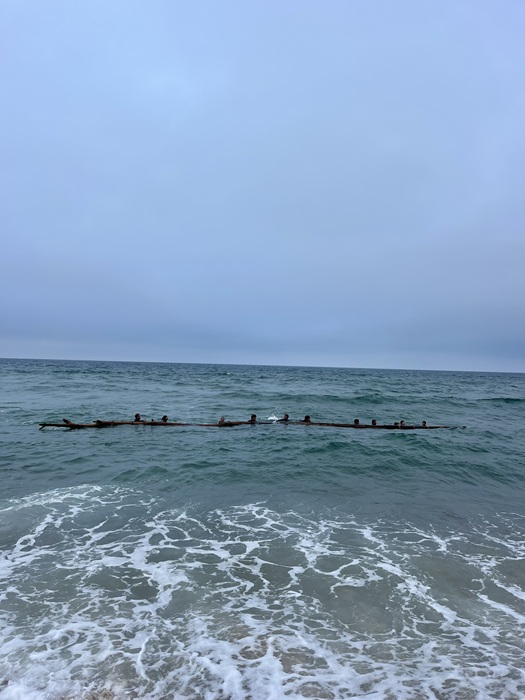
When paddling proved to be too slow and dangerous, the tree was led to chest-deep water and walked, waded, swum, cursed, and dragged through the ocean for five miles. It took an entire tide cycle. The group set out at six o’clock and made it to White Crest at midnight.
You could not pay anyone to do this. Risking drowning or being gored by a massive tree in the shore break, dragging a log weighing well over 1,000 pounds five miles though the surf only to spend the next two days digging tons of sand from a hole in order to pull the giant log upright so that you can then throw all that sand right back where it came from does not, by any rational evaluation, make any sense.
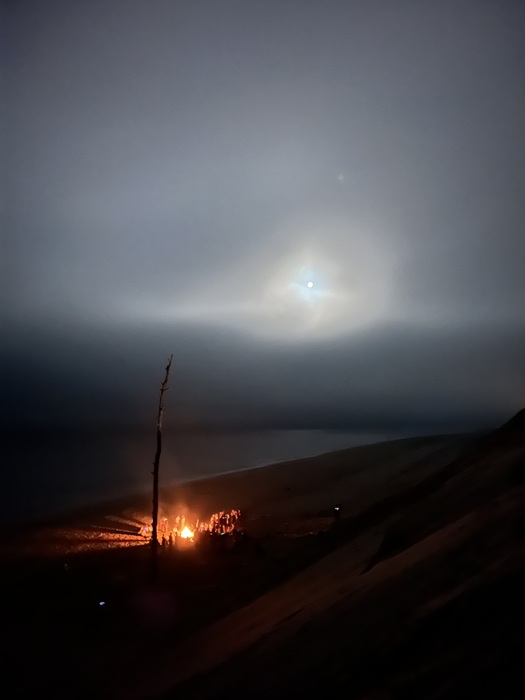
The ritual of the Kahuna pole requires cooperation. It builds bonds. It makes us feel, right to our bones, the essential role that interdependence, trust, communication, and connectedness have in our lives. It speaks to the strength of togetherness. The Kahuna pole, standing on the beach against the elements, at the edge of the Earth, at the threshold of a wild and indifferent world, is a symbol of the most profound and radically important thing we can create as humans. It’s a monument to community.
And then there are the waves. Twenty-eight days after the Kahuna pole went up, as the full Sturgeon Moon rose orange and round through a clear blue sky, the ocean came to life. A swell arrived. It was the best run of summer waves to hit the Cape in years.



